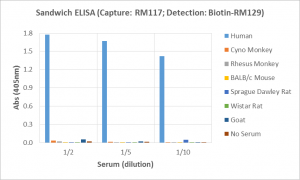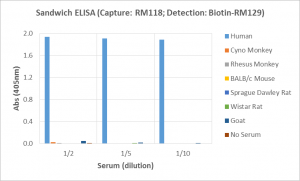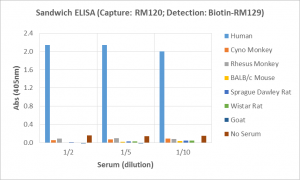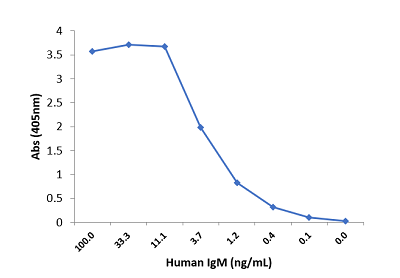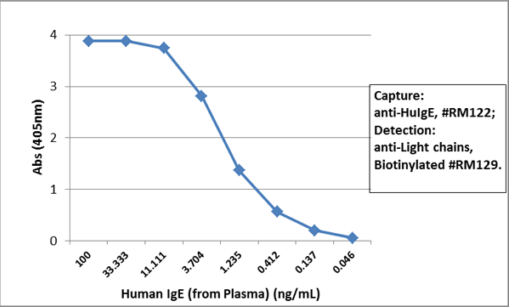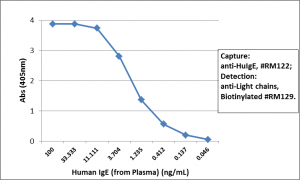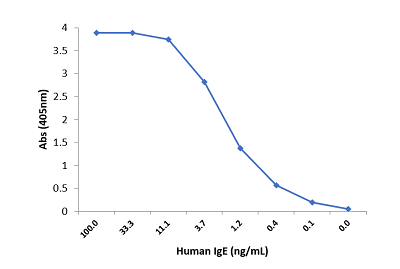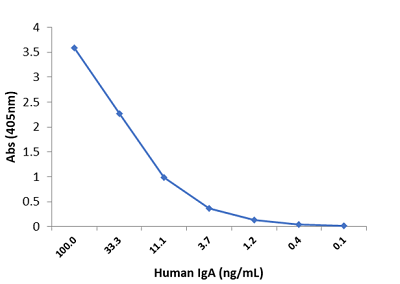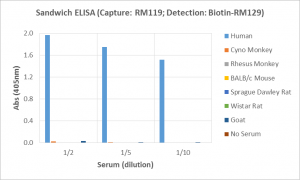
Sandwich ELISA, using RevMAb human IgG2 matched antibody pair, shows species reactivity to human only, and shows no cross-reactivity to monkey (Cyno or Rhesus), mouse IgG, rat IgG, or goat IgG.
IgG3 (human) Matched Antibody Pair
REV-31-1021-MK
ApplicationsELISA
Product group Antibodies
ReactivityHuman
Overview
- SupplierRevMAb Biosciences
- Product NameIgG3 (human) Matched Antibody Pair
- Delivery Days Customer10
- ApplicationsELISA
- CertificationResearch Use Only
- Protein IDP01860
- Protein NameImmunoglobulin heavy constant gamma 3
- Scientific DescriptionThe Human IgG3 Matched Antibody Pairs is specific to Human IgG3 and has been demonstrated through ELISA to not recognize (cross) IgG from Non-Human Primate species (Rhesus and Cynomologus macaques), nor does the matched pair recognize mouse, rat or goat immunoglobulin. The kit can be used for the detection of therapeutic antibodies from samples obtained from experimental animals to provide accurate pharmacokinetic (PK) data. IgG (Immunoglobulin G) is the most abundant Ig isotype in serum and makes up approximately 75% of all serum Immunoglobulins. In humans, there are four subclasses of IgG with highest serum concentrations of IgG1 followed by IgG2, IgG3 and IgG4. The IgG molecule consists of two heavy and two lights chains (kappa or lambda) resulting in a molecule with two arms for antigen binding. High levels of IgG antibodies are induced following the initial IgM response in a typical immune response to antigens. Because of its relative abundance and excellent specificity toward antigens, IgG is the principle antibody used in immunological research and clinical diagnostics. Clinically, measured IgG antibody levels are generally considered to be indicative of an individuals immune status to particular pathogens. - The Human IgG3 Matched Antibody Pairs is specific to Human IgG3 and has been demonstrated through ELISA to not recognize (cross) IgG from Non-Human Primate species (Rhesus and Cynomologus macaques), nor does the matched pair recognize mouse, rat or goat immunoglobulin. The kit can be used for the detection of therapeutic antibodies from samples obtained from experimental animals to provide accurate pharmacokinetic (PK) data.IgG (Immunoglobulin G) is the most abundant Ig isotype in serum and makes up approximately 75% of all serum Immunoglobulins. In humans, there are four subclasses of IgG with highest serum concentrations of IgG1 followed by IgG2, IgG3 and IgG4. The IgG molecule consists of two heavy and two lights chains (kappa or lambda) resulting in a molecule with two arms for antigen binding. High levels of IgG antibodies are induced following the initial IgM response in a typical immune response to antigens. Because of its relative abundance and excellent specificity toward antigens, IgG is the principle antibody used in immunological research and clinical diagnostics. Clinically, measured IgG antibody levels are generally considered to be indicative of an individuals immune status to particular pathogens.
- ReactivityHuman
- Storage Instruction-20°C
- UNSPSC12352203

